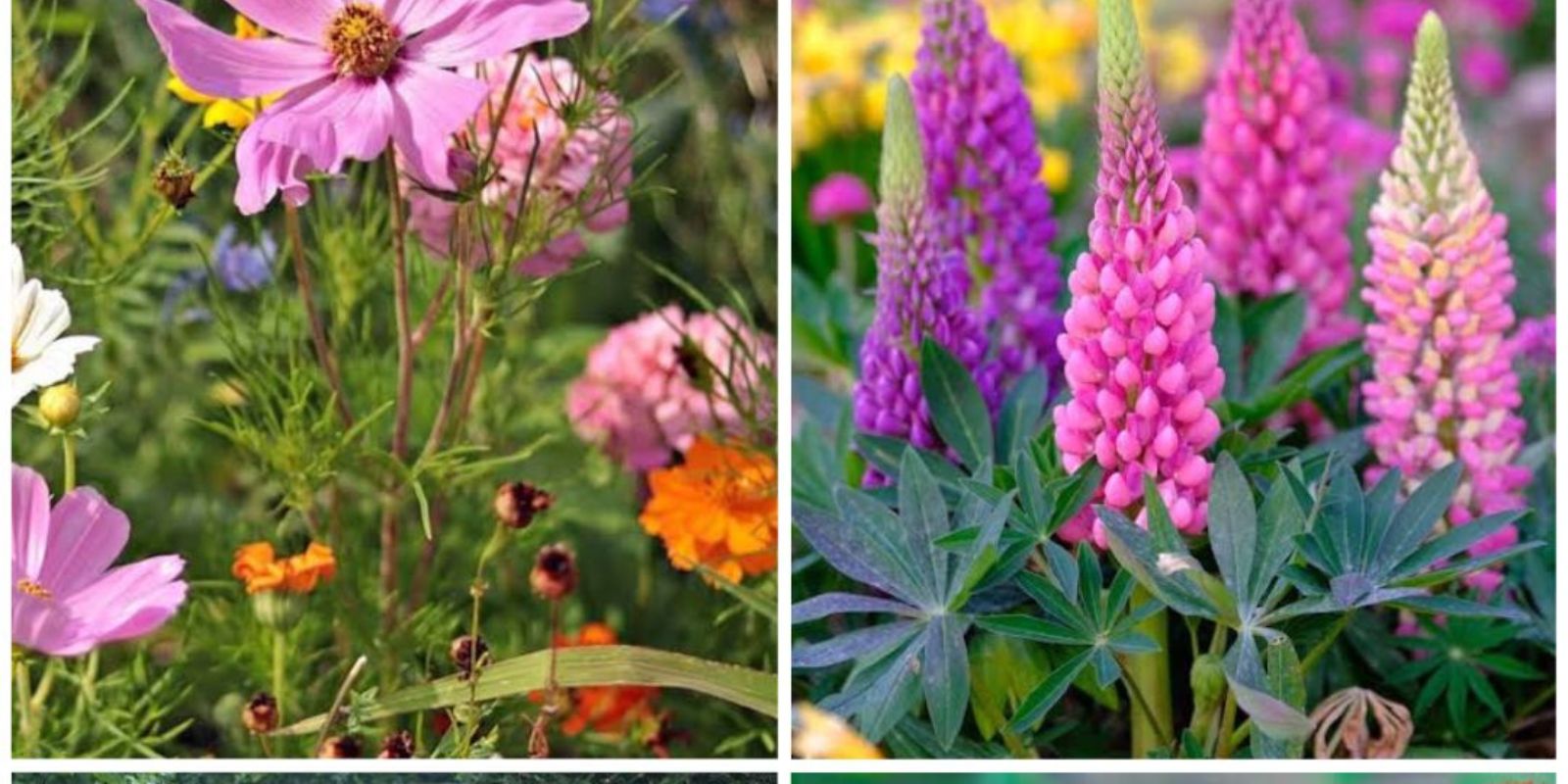Creating a lush, colorful garden doesn’t have to mean constant replanting or extensive maintenance. Self-seeding plants are nature’s gift to gardeners, offering beautiful blooms year after year with minimal effort. These plants drop their seeds naturally, regrowing each season and even expanding their presence in your garden. From fragrant lavender to towering sunflowers, self-seeding plants not only simplify your gardening routine but also attract pollinators, enhance biodiversity, and add timeless beauty to your outdoor space.
This guide explores 12 stunning self-seeding plants that are perfect for creating a thriving, effortless garden.
1. Lupin Blaue (Lupinus polyphyllus)
Self-Seeding: Lupins spread through seeds naturally, ensuring their gorgeous blooms return annually.
Benefits: These hardy plants create stunning, colorful displays in pots or garden beds. Their vertical spikes of flowers add structure and elegance to any garden. Lupins thrive in well-drained soil and require minimal watering once established.
2. Marigold (Calendula officinalis)
Self-Seeding: Calendulas scatter their seeds freely, germinating reliably each year.
Benefits: Known for their cheerful orange and yellow blooms, marigolds are a favorite among gardeners for their vibrant colors and low-maintenance nature. They are also a magnet for bees, making them a fantastic addition to pollinator-friendly gardens. Calendulas grow well in sunny spots and are highly adaptable to various soil types.
3. Poppy (Papaver rhoeas)
Self-Seeding: Poppies are prolific seeders, quickly spreading and reappearing in your garden annually.
Benefits: These iconic wildflowers bring a whimsical charm to gardens with their delicate, papery petals. Their bright reds, pinks, and whites create a stunning wildflower aesthetic. Plant poppies in well-drained soil under full sun for best results.
4. Sunflowers (Helianthus annuus)
Self-Seeding: Sunflowers drop seeds in autumn, ensuring new plants sprout the following year.
Benefits: With their towering height and striking yellow blooms, sunflowers are garden showstoppers. They provide shade, attract pollinators, and even offer seeds for birds and gardeners alike. Plant them in sunny spots with nutrient-rich soil for impressive growth.
5. Lavender (Lavandula spp.)
Self-Seeding: Lavender seeds naturally sprout near the parent plant, creating recurring blooms.
Benefits: Lavender is beloved for its fragrant flowers and soothing scent. It’s a low-maintenance herb that thrives in sunny, well-drained soil. Lavender also deters pests while attracting bees and butterflies, making it both beautiful and functional.
6. Cornflower (Centaurea cyanus)
Self-Seeding: Cornflowers spread easily and bring their signature blue blooms back every year.
Benefits: These classic wildflowers are perfect for colorful garden beds and borders. Cornflowers thrive in sunny spots and well-drained soil, making them an effortless addition to cottage gardens. Their nectar-rich flowers are also a favorite of pollinators.
7. Bee’s Friend (Phacelia tanacetifolia)
Self-Seeding: This plant reseeds itself and blooms reliably each year.
Benefits: As its name suggests, Bee’s Friend is a pollinator magnet. Its delicate, lavender-colored flowers enhance biodiversity and support natural pest control in the garden. It’s ideal for eco-conscious gardeners aiming to create a harmonious environment.
8. Wild Nasturtium (Tropaeolum majus)
Self-Seeding: Nasturtiums scatter seeds freely, growing spontaneously in various garden spaces.
Benefits: With their vibrant, edible flowers and sprawling growth habit, nasturtiums are versatile plants that add both beauty and utility to gardens. They’re perfect for companion planting, as they deter pests from other crops.
9. Easter Bells (Narcissus spp.)
Self-Seeding: These flowers naturally multiply through seeds and bulbs.
Benefits: Easter Bells, or daffodils, bring cheerful yellow and white blooms to gardens in early spring. Their ability to propagate themselves makes them an excellent choice for perennial borders or naturalized areas. They thrive in well-drained soil under full to partial sunlight.
10. Foxglove (Digitalis purpurea)
Self-Seeding: Foxgloves drop seeds generously, ensuring new plants emerge yearly.
Benefits: These towering plants add a dramatic, wild beauty to shady gardens. With their bell-shaped flowers in shades of pink, purple, and white, foxgloves are ideal for woodland-style gardens. They thrive in rich, moist soil and partial shade.
11. Mountain Bindweed (Ipomoea purpurea)
Self-Seeding: This climbing plant reseeds itself and grows anew each year.
Benefits: Also known as Morning Glory, Mountain Bindweed is perfect for decorating fences, trellises, or pergolas. Its fast growth and vibrant blooms create stunning vertical interest in gardens. Provide support structures and plant in full sun for best results.
12. Cosmos (Cosmos bipinnatus)
Self-Seeding: Cosmos effortlessly drop seeds, producing new blooms every season.
Benefits: These easy-to-grow flowers add bright pink, white, and orange hues to garden beds. Cosmos are drought-tolerant and thrive in poor soil, making them a great choice for beginner gardeners. Their nectar-rich blooms also attract bees and butterflies.
Tips for a Thriving Self-Seeding Garden
To maximize the potential of self-seeding plants, follow these simple tips:
- Leave Seed Heads Intact: Allow flowers to naturally drop their seeds before trimming or deadheading.
- Choose Sunny Spots: Most self-seeding plants thrive in sunny, well-drained locations.
- Water Moderately: Overwatering can wash away seeds, so keep the soil slightly moist but not saturated.
- Control Spread: While self-seeding plants are low-maintenance, some may spread aggressively. Thin out seedlings as needed to avoid overcrowding.
Why Choose Self-Seeding Plants?
Self-seeding plants save time, effort, and money while providing year-round beauty and ecological benefits. They’re perfect for busy gardeners or those looking to create natural, effortless landscapes. Whether you’re a seasoned gardener or just starting, adding these plants to your garden ensures vibrant blooms for years to come.
Start Your Self-Seeding Garden Today!
Ready to enjoy a vibrant garden with minimal effort? Choose your favorite self-seeding plants and let nature do the work. Share your gardening experiences below, and don’t forget to inspire others by spreading the beauty of self-seeding blooms!

